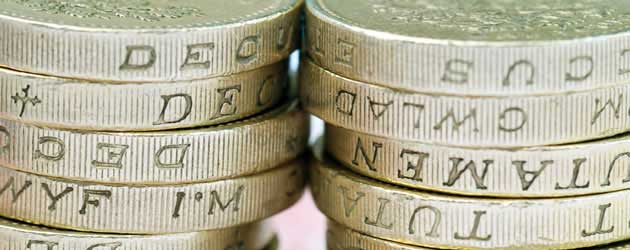
The Pound to US Dollar exchange rate (GBP/USD) plunged -1.8 cents on Friday, reaching a fresh 4-month low of 1.4859, as markets reacted to the latest US Non-farm Payrolls report. With the US labour market seemingly on the up it is increasingly likely that the Federal Reserve will begin to taper its asset purchasing scheme in the near future.
The Fed’s QE3 scheme is seen to devalue the US Dollar because it artificially brings down the yield on US Treasuries, which subsequently makes Dollar-denominated assets less attractive to profit-hungry investors. During June Fed Chairman Ben Bernanke said that the US Central Bank is prepared to slowdown its monthly asset purchases from the current rate of $85 billion to $0 over the next twelve months. The Fed noted that additional improvements in US economic performance would lead to QE tapering.
The highly awaited US Non-farm Payroll print showed that 195,000 people were added to the job list during June, smashing economists’ forecasts of just 165,000. The upbeat report also detailed how May’s figure was upgraded from 175,000 to 195,000 and April’s score was revised higher from 149,000 to 199,000. The headline Unemployment Rate held firm at 7.6% as the participation rate improved by 0.1%, which offset a fall in joblessness. Each section of the release saw improvements as the average number of hours worked rose by 0.2% and the average hourly pay jumped 0.4%.
In reaction to the positive NFP print, which greatly increased the possibility of Fed tapering over the next few weeks, US Treasury yields spiked at a near-2-year high of 2.7% and the safe haven US Dollar rallied across the board. Dan Dorrow of Faros Trading LLC said:
“These are really strong numbers, and there was an expected strong Dollar response…This suggests tapering sooner rather than later because cumulative strong momentum is growing.”
In response to the bullish NFP signal the US Dollar grew by around 1.8 cents against the Pound, 0.75 cents against the Euro, 0.5 cents against the Canadian Dollar, 1.2 cents against the Australian Dollar and 1.2 cents against the New Zealand Dollar.
The Pound’s poor performance against the ‘Greenback’ was also influenced by continuing concerns among investors that the Bank of England is likely to embark on further QE at some point this summer. With economic indicators appearing to be picking-up momentum and Service Sector output – equivalent to over 70% of UK GDP – at a 2-year high sentiment towards Sterling was on the up last week until the BoE released an unexpected policy statement.
The dovish BoE report showed that the UK Central Bank, now Governed by Canadian Mark Carney, is keen to keep monetary policy loose for the foreseeable future in order to help the economic recovery accelerate towards exit velocity. This means record-low interest rates and the possibility of further quantitative easing; this means bad news for the Pound.
GBP/USD slid through significant psychological support at 1.5000, which allowed the Sterling / US Dollar exchange rate to plummet further towards 1.4859. Any indication that the Fed is about to slowdown on stimulus, or any more dovish remarks from the BoE, could send GBP/USD even lower towards support at 1.4258.

Comments are closed.